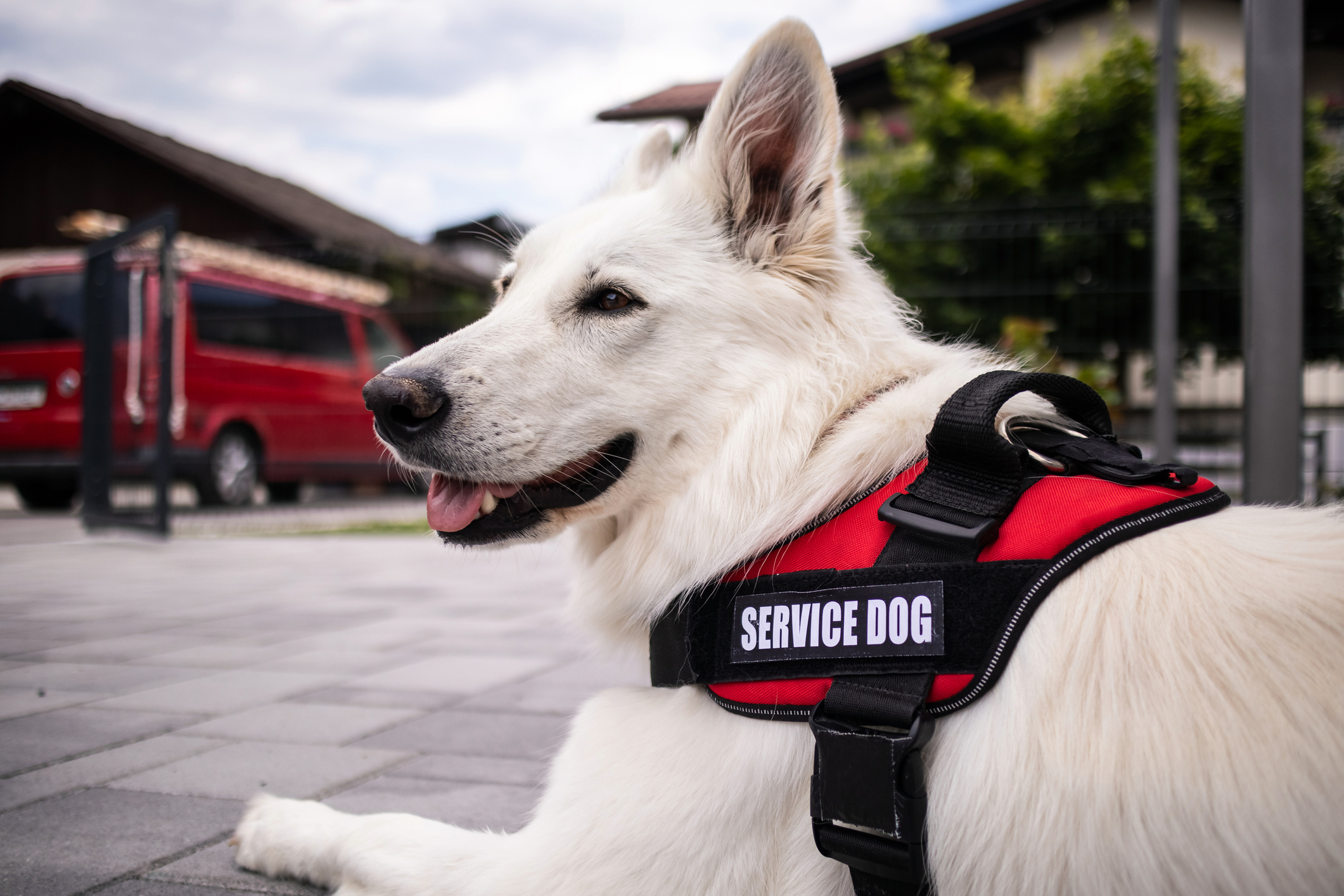Although they are companions to their human partners, service animals are not pets. Instead, they are trained to perform specific daily tasks, which are often still required when responders are assisting during a hurricane, mass casualty event, or another emergency. As such, emergency planning efforts should include service animals to ensure responders can identify the animals’ critical roles, acknowledge their specialized training, and provide more-effective assistance to the humans who need their help.
The most common species used for service animals are horses and dogs. Horses are used for transportation (pulling buggies) and farm work (pulling plows), often seen in the Amish and Mennonite communities. In addition, miniature horses have been used to assist blind individuals with mobility. However, the preponderance of service animals are dogs, which generally serve three roles: assistance, protection, and detection work.
Critical Roles for Service Animals
Assistance dogs perform specific tasks for their handlers. For instance, assistance dogs for people who are deaf and hard of hearing alert their handlers to specific sounds in the environment, such as doorbells and alarm clocks. Dogs that assist individuals with physical disabilities perform tasks that would be difficult or impossible for the handler, such as picking up dropped items. Guide dogs help the blind or visually impaired by alerting them to stairs and curbs, taking them around obstacles such as poles, and safely crossing streets.
As this role states, protection dogs provide protection. For example, they often protect their owners from environmental threats, such as other humans and dogs. In addition, they can be trained to protect property such as homes and businesses.
Detection dogs perform various tasks. Some sniff out compounds such as explosives and narcotics. Border dogs are often trained to detect illegal items like guns and gun parts. Search and rescue dogs are skilled at finding live humans buried in rubble or avalanches. In addition to survivors, detection dogs have been used to locate deceased victims and human remains.
Dogs are being used in medical contexts as well. For example, some dogs can detect seizures and diseases like diabetes and cancer.
Training
Service dogs are usually trained via organizations or individuals. For instance, many guide dogs go through formal programs by organizations such as “Seeing Eye” and “Guiding Eyes for the Blind.” However, other guide dogs are trained by their individual handlers.
Similar situations occur with search and rescue dogs. However, there is one difference. For the Federal Emergency Management Agency, canine/handler teams undergo a rigorous certification process. Unfortunately, many, if not most, other canine/handler teams – even those trained by organizations – are not certified.
Standardization is another critical issue. No two organizations or individuals train service dogs in precisely the same way. There are differences, even between the two well-known guide dog training organizations mentioned above. However, many organizations do provide well-trained service dogs.

Knowing If Dogs Are Service Dogs
Sometimes, knowing whether the dog is a service dog can be easy. Handlers, such as policemen and search and rescue dog handlers, are likely to be in uniform. In these cases, the dog will most likely be on a leash and wear a harness, a vest, or both. Of important note for first responders, the dog may not be wearing this equipment while riding in a car. However, the equipment will likely be present, lying on the seat or floor of the vehicle.
There are other cases in which it is more difficult to discern if the dog is a service dog – for instance when the handler’s disability is not visible. Still, a dog on a leash wearing a vest, a harness, or other equipment may indicate a special situation. Under the Americans with Disabilities Act, one can ask the handler: “What work or task has the dog been trained to perform?”
Considerations for Emergency Responders
There are three primary recommendations emergency responders should keep in mind when encountering service dogs during emergencies:
- Be aware that the service dog may be upset as their handler is injured. Despite the animal’s training, they may jump, bark, and whine to show distress. Talk to the dog in calm and reassuring tones.
- Keep the service dog with its handler whenever possible. Separation can cause distress for both the animal and the handler.
- Talk calmly to the service dog if it must be separated from the handler. Reach out slowly in a non-threatening manner. If not present, attach a leash to the ring on the collar and lead the dog away to a safe place. If a handler’s friend or relative is present and not injured, the animal can be given to them. Be aware, however, that the service dog will most likely resist being led away from their handler. If the handler is conscious, tell them why the service dog needs to be taken away and where it is going.
In summary, service dogs can be trained by either organizations or individuals for assistance, protection, or detection work. In these roles, these animals are trained to perform many tasks. During an emergency, responders must recognize and understand the roles service dogs play and coordinate their efforts to best serve the people they both are there to assist.

Melissa Resnick
Dr.MelissaResnick is presently a research scientist at the University at Buffalo, Jacob School of Medicine’s Department of Biomedical Informatics. Melissa (with guide-dog “Lido”) earned abachelor’sdegreein biologyfrom the University at Albany, amaster’s (with guide-dog “Ember”) inpsychology from Rensselaer Polytechnic Institute, amaster’s (with guide-dog “Ditto”) inlibraryscience from Queens College, and adoctorate (with guide-dog “Cora”) from the University of Texas, Health Science Center at Houston inbiomedicalinformatics. She spent 4 years of academic fellowship at the National Institutes of Health’s National Library of Medicine. Becoming interested in the intersection of medicine, informatics,and disaster preparedness/emergency management (“DPEM”) during a national pandemic, Dr. Resnick began supplemental studies in Frederick Community College’s degree program inemergencymanagement and is currently pursuing amaster’s in DPEM at Arkansas State University, which focuses on healthcare. She recently earned her Associate Emergency Manager (AEM®) professional designation from the International Association of Emergency Managers and is presently pursuing the Certified Emergency Manager (CEM®) professional designation. Melissa has been fortunate to independently travel to over 15 countries, Alaska, Hawaii,and most major U.S. cities. Dr. Resnick is open to professional collaborations.
- Melissa Resnickhttps://www.domesticpreparedness.com/author/melissa-resnick





